Knowing the different types of tea you can try out should be exciting if you are a tea lover.
Besides learning about types of tea, it is also beneficial to understand the difference between them.
Drinking tea goes beyond having a decent breakfast. There is a boatload of health benefits associated with drinking tea. This article is for you if you are a tea lover and in the mood for some new experiences.
Or, you want to learn about the difference between the different types of tea.
Ok, let us jump into business.
But first,
What is Tea Made of?
Camellia sinensis is the mother plant for all types of “true” tea. The tea plant has two varieties:
- Camellia sinensis var. sinensis grows in most Asian countries. And,
- Sinensis var. assamica, which grows majorly in India.
However, the different harvesting and processing methods give each type of tea its unique quality.
Without wasting time, let us discuss the different types of tea you should know of as a tea lover.
10 Types of Tea Every Tea Lover Should Know
Black Tea
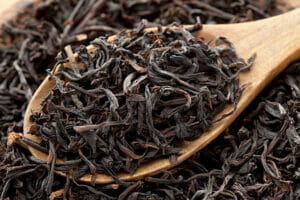
Are you a tea lover if you do not know about black tea? Even non-tea lovers know about black tea; it is that popular. It is one the most popular types of tea.
Lipton and Tetley are some popular brands of black tea you can find in the grocery stores.
The tea gets its name from its coppery colour and has a very potent flavour. Unfortunately, black tea has high caffeine content.
How to Process Black Tea?
Firstly, the tea leaves are first plucked and allowed to wilt. Then, tea farmers crush the leaves when they are dry enough. The leaves are then left to undergo oxidation and colour change.
Where is Black Tea Produced?
India and China are the two major producers of black tea. Although, over the years, there has been an increase in tea-producing-countries.
However, Indian black tea has a more robust flavour and higher caffeine content than Chinese black tea.
Unlike the Indian black teas, which require a lot of sweeteners, Chinese black teas can be taken plain.
Green Tea

Green tea is another “true” tea with a greenish-yellow hue. Unlike black tea, green tea has a mild taste. It also contains less caffeine than black tea. It is also one of the most prevalent types of tea.
How to Process Green Tea?
Unlike black tea, green tea does not undergo oxidation. With green tea, the plucked leaves are immediately steamed or pan-fried.
Afterwhich, the leaves are pressed to shape and allowed to dry. Note that the tea retains its greenish hue and vegetal taste because the leaves did not undergo oxidation.
Where is Green Tea Produced?
China and Japan are the two major producers of green tea. Japanese green tea is made from steamed leaves and has an emerald green hue.
In contrast, Chinese green tea is made from pan-fried leaves and has a golden hue.
Also, Japanese green tea has a stronger flavour than Chinese green tea.
White Tea
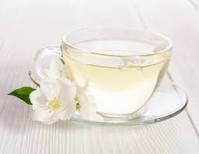
Yes, there are different types of tea, but white tea is cherished by most who have tasted it. It is a delicious tea that is mildly processed. However, it is a healthy tea packed with antioxidants.
White tea has little caffeine, a light body weight, and a mild flavour. White Peony is a common type of white tea.
How to Process White Tea?
The tea requires minimal processing. The initial tips and buds of the tea plant are what make white tea. However, the leaves must not oxidize.
Where is White Tea Produced?
Fujian province in China is the primary producer of white tea. However, countries like Sri Lanka, Nepal, and Taiwan, also produce white tea in small quantities.
Oolong Tea
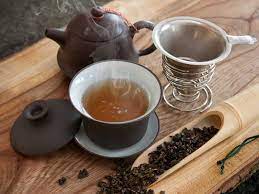
The leaves harvested for this tea are partially oxidized. As a result, oolong tea has a hue that falls between yellow to amber.
Interestingly, the tea leaves are reusable multiple times. It also has a rich flavour.
How to Process Oolong Tea?
Oolong is a tea from the Camellia sinensis variation of the tea tree. The leaves are left to oxidize over short periods before they are dried and rolled.
The oxidation period of the tea leaves determines their hue. Leaves that oxidize for short periods are lighter than those left longer.
Where is Oolong Tea Produced?
Fujian and Guangdong provinces of China and a tiny island in Taiwan are the primary producers of Oolong tea.
Pu-erh Tea
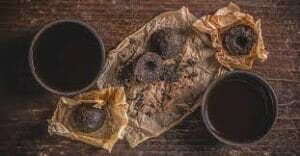
Pu-erh is a partially fermented tea. It has a dark brown colour with high caffeine content. To some extent, Pu-erh is similar to black tea. The tea also has a strong flavour.
How to Process Pu-erh Tea?
Pu-erh leaves are plucked and immediately steamed or pan-fried. This initial process prevents oxidation.
Roll the leaves to shape and leave them to dry. Then, ferment the dried leaves. The fermentation period is what gives this tea its rich earthy flavour.
Where is Pu-erh Tea Produced?
Interestingly, Pu-erh tea is the traditional tea of Pu-erh city. Pu-erh is a city located in the Yunnan province of China.
Pu-erh city is the primary producer of Pu-erh tea. However, Hunan and Guangdong provinces also produce this tea.
Purple Tea
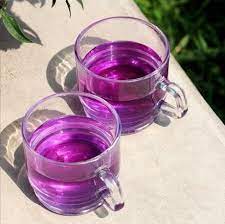
Purple tea is a healthy tea rich in antioxidants and low in caffeine. The tea is gotten from wild-growing purple leaves in India.
However, Kenya is currently the major producer of this tea. This purple-coloured tea is low in caffeine and has a mild flavour.
How to Process Purple Tea?
Purple tea is made from partially oxidized leaves. Purple leaves are processed the same way as oolong leaves. Thanks to the colour of the leaves, the tea has a purple hue.
Where is Purple Tea Produced?
Purple leaves were initially grown in India. However, some samples of the leaves were taken to Kenya for research purposes.
Interestingly, the leaves thrived in the Kenyan clime. Now, Kenya is the third largest producer of Purple tea after China and India.
Matcha Tea
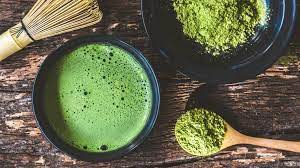
Macha is powdered green tea. This tea is commonly drunk in Japan. This healthy tea has a rich umami flavour but is slightly bitter.
How to Process Matcha Tea?
The plant used to prepare this tea is shredded a couple of weeks before harvesting. Shredding the plant increases the chlorophyll content. Chlorophyll gives the tea a deep emerald green colour.
The leaves are also partially oxidized after harvesting. Afterwhich, the leaves are rolled into shape and dried. Then, the dried leaves are ground into a powdery form.
Where is Matcha Tea Produced?
Match has roots in China, but Japan is currently the highest producer of Matcha tea.
Herbal Tea
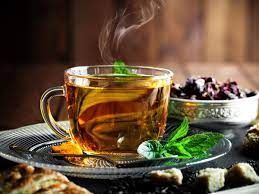
Shockingly, herbal tea is not a true tea. What is known as herbal tea is simply a combination of herbs.
The tea has no caffeine content, and the herbal blend determines its taste and hue.
However, here are the popular herbs and spices added to the tea are:
- Peppermint,
- Hibiscus
- Chamomile
- Ginger
Rooibos Tea
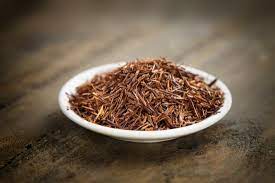
This special type of herbal tea is made from a plant native to South Africa. it is one of the not-so-common types of tea.
The tea is healthy and caffeine-free. Rooibos has a similar body size to black tea.
The tea can be taken plain or taken with milk. Either way, it has a delicious taste with a strong flavour.
Hibiscus Tea
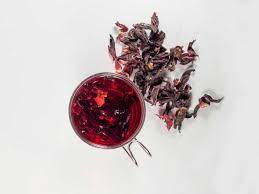
Hibiscus tea is a delicious tea with a wide range of health benefits. Research has shown that Hibiscus tea helps reduce your blood sugar level. Thereby preventing diabetes.
It is also rich in antioxidants and is associated with fighting urinary tract infections and other diseases.
The tea is ideal for anyone who wants to reduce sugar intake but cannot get rid of their sweet tooth.
How to Process Hibiscus Tea?
Hibiscus tea is made by pouring hot water on dried leaves.
Where is Hibiscus Tea Produced?
Hibiscus tea is one of the prevalent types of tea. However, the flower is mainly grown in Africa and Asia.
Health Benefits of Drinking Tea
Besides being a beverage, research has shown an impressive amount of health benefits associated with drinking tea.
Here are some of those health benefits:
- Teas like Matcha, Hibiscus, and Green tea are rich in antioxidants. Antioxidants help the body neutralize free radicals that can produce an oxidative reaction.
- Green, Black, and Oolong tea help you control body fat.
- Most herbal combinations are great for brain health.
- Herbal teas are also great for bowel movement and digestion.
- Hibiscus, Green, Black, and some herbal tea combinations help control blood sugar levels.
Conclusion
There are different types of tea currently available in the market. So, if you are new to the world of tea, you might be overwhelmed by the options. However, embrace your inner adventurer and try as many as possible. Eventually, you’ll find the one tea you never get tired of drinking. Also, tea is beyond a beverage. Research has shown that many types of tea have impressive health benefits. Some benefits include anti-diabetic properties, anticancer properties, obesity management, bowel health, and many more. So, if you never fancied drinking tea, you need to reconsider your stance. You might want to start with any of the types of tea discussed above.
Thank you for reading, and make sure you take a cup of tea. Or better, make sure you try a new cup of tea today.


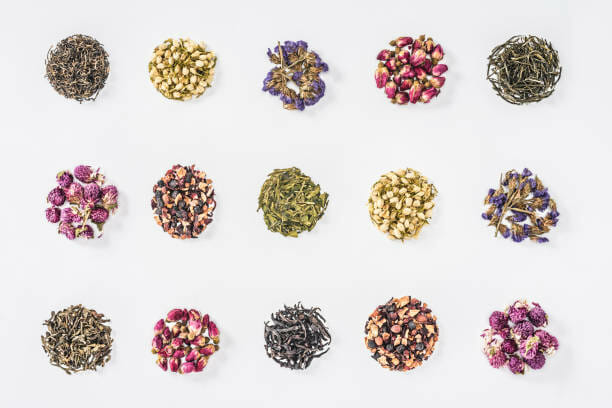

This is such an healthy information